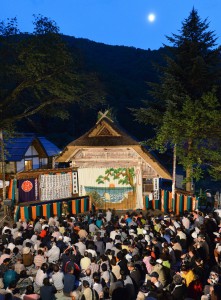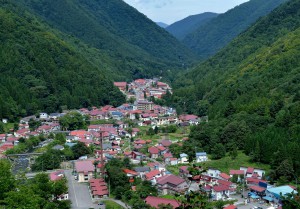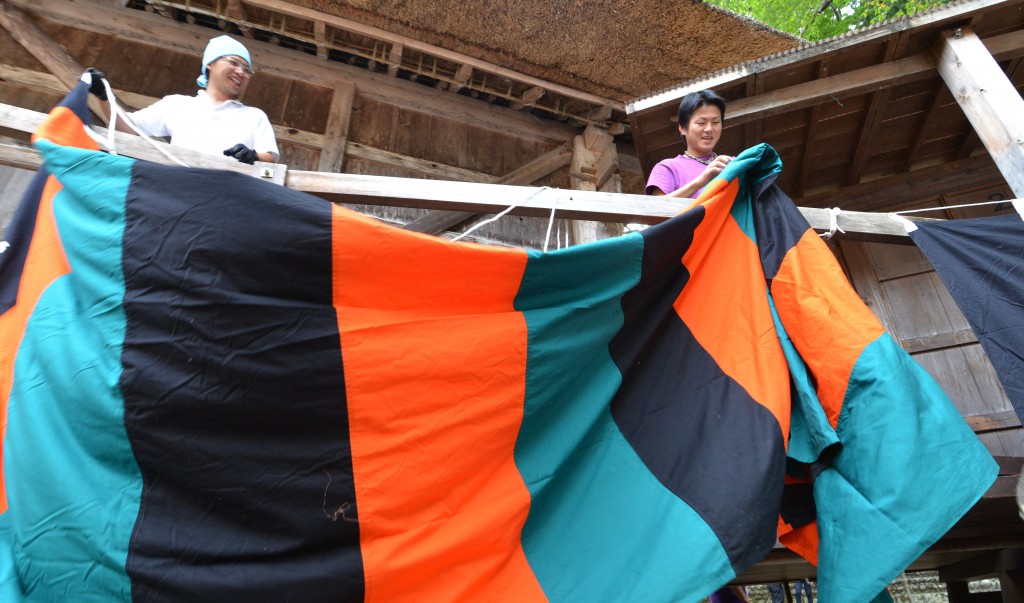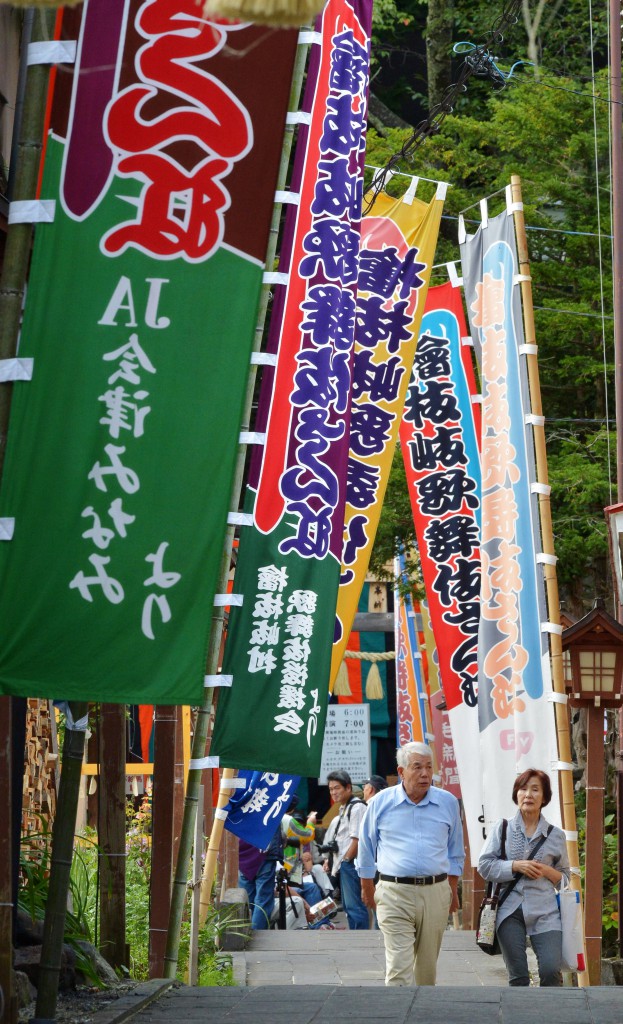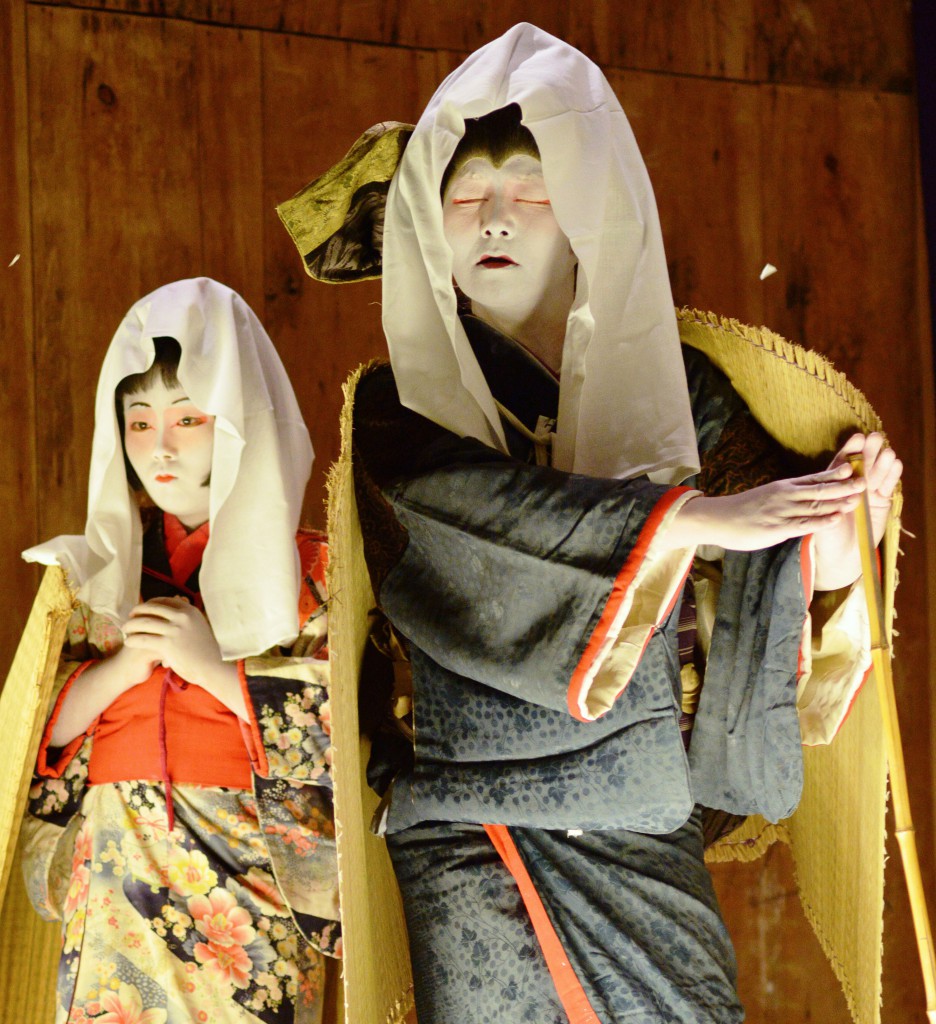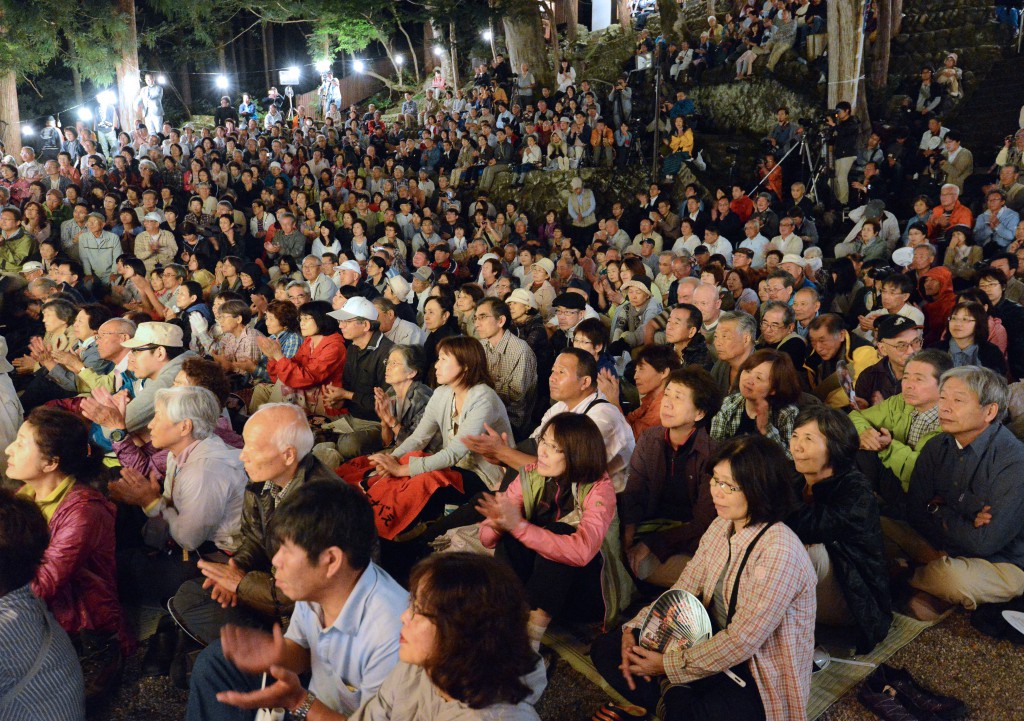
Climax with blind mother showing deep love to daughter. Audience burst into applause. (in Hinoemata, Fukushima Prefecture)
Hiroki Arai
– Hinoemata Kabuki (Hinoemata, Fukushima Prefecture) –
Hinoemata Kabuki performed by Hinoemata villagers is one of the traditions that can be traced back to the Edo Period. It was started by a villager who watched a kabuki play in Edo. Learning from what he saw, ancient Hinoemata villagers created Hinoemata Kabuki as a performance in dedication to the gods. Since then, it’s been handed down through generation to generation for more than 270 years.
On the evening of September 6, 2014, a shrine located in the central part of the Hinoemata village was packed with people waiting for a kabuki play to begin. It was the day for a group of local kabuki actors to do its last kabuki performance of the year, and there was an audience of almost 800 people in the shrine of the village with a population of 600.
The actors played a human event story about revenge against Minamoto no Yoshiie, a Minamoto clan samurai, by the Abe clan. The story had a particular emphasis on ties between parents and children. Whenever the actors played big scenes with signature phrases and poses, the audience was ensorcelled to applaud.
Hinoemata village is surrounded by steep mountains. The kabuki plays in Hinoemata are performed more than three times a year by the group of about 30 villagers in all ages from school children to veterans in their 70s. The group, Chibanoya Hanakoma-za, can perform 11 different
stories exactly in the original style. As its performance has a high cultural value, it’s designated as one of the significant tangible folk cultural assets by the prefecture. Its theater building is also designated as one of the significant tangible folk cultural assets of Japan.
“Lines first, facial expressions second and dancing third,” is an instruction given to actors by ancient villagers. Masanori Hoshi, 72, is an ex-principal of the troupe and a guide at a local kabuki folklore museum. “Seniors told me to make audience cry by delivering dramatic lines effectively,” he recalled.
Continuing the grand tradition is a big challenge, but “the villagers have a pride in continuing the tradition to express their dedication to the gods,” said Choichi Hoshi, 66, current principle of the troupe, very proudly. “There might be some difficulties but I’m sure it will be continued as the villagers believe that we need kabuki here.” Masaya Hoshi, 11, a child actor who also performed in the last performance said smilingly, “I may leave the village when I grow up, but I will come home to play kabuki.”
(Sept. 14, 2014)



